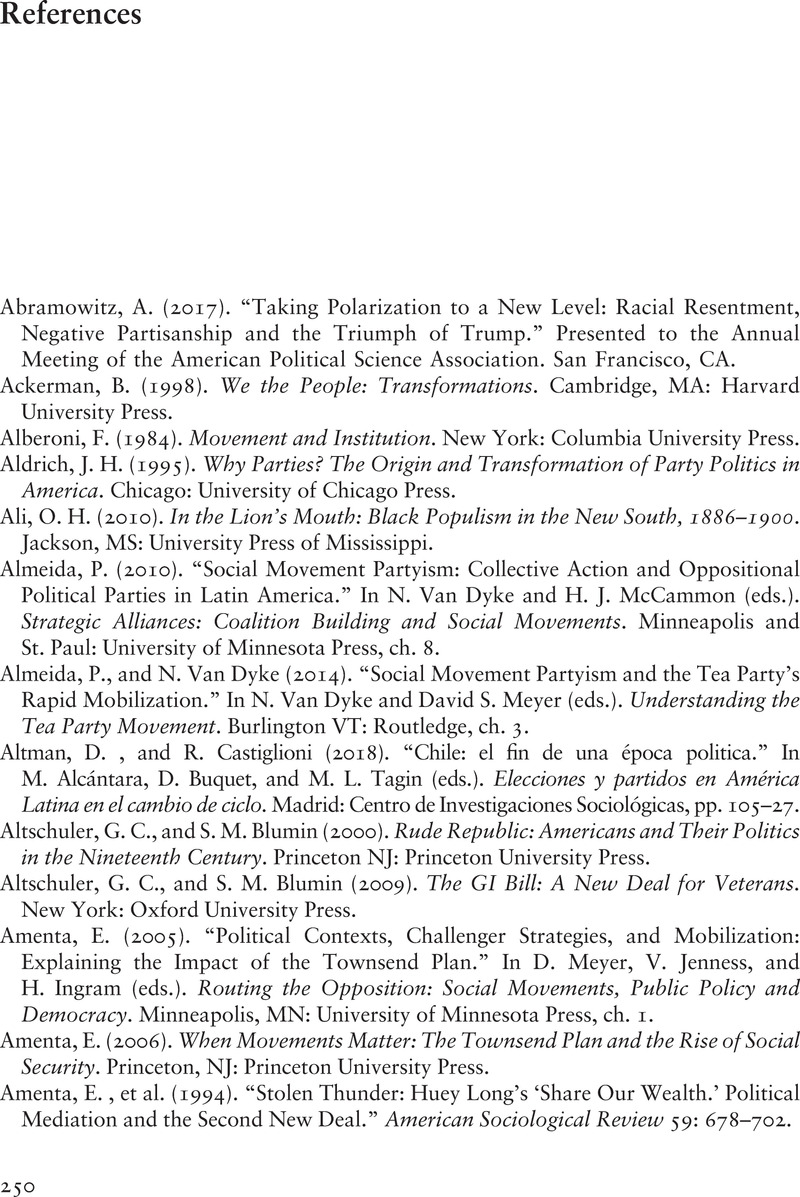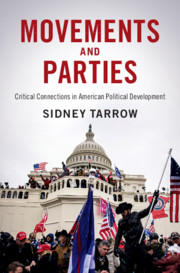Book contents
- Movements and Parties
- Cambridge Studies in Contentious Politics
- Movements and Parties
- Copyright page
- Dedication
- Contents
- Tables
- Figures
- Preface and Acknowledgments
- Introduction
- 1 Movements and Parties in Contentious Politics
- Part I The “Party Period”
- Part II The Transitional Period
- Part III Hollowing Parties in a Movement Society
- Part IV Contemporary Conjunctions
- Conclusions
- References
- Index
- Books in the Series (continued from p. ii)
- References
References
Published online by Cambridge University Press: 17 August 2021
- Movements and Parties
- Cambridge Studies in Contentious Politics
- Movements and Parties
- Copyright page
- Dedication
- Contents
- Tables
- Figures
- Preface and Acknowledgments
- Introduction
- 1 Movements and Parties in Contentious Politics
- Part I The “Party Period”
- Part II The Transitional Period
- Part III Hollowing Parties in a Movement Society
- Part IV Contemporary Conjunctions
- Conclusions
- References
- Index
- Books in the Series (continued from p. ii)
- References
Summary

- Type
- Chapter
- Information
- Movements and PartiesCritical Connections in American Political Development, pp. 250 - 272Publisher: Cambridge University PressPrint publication year: 2021



